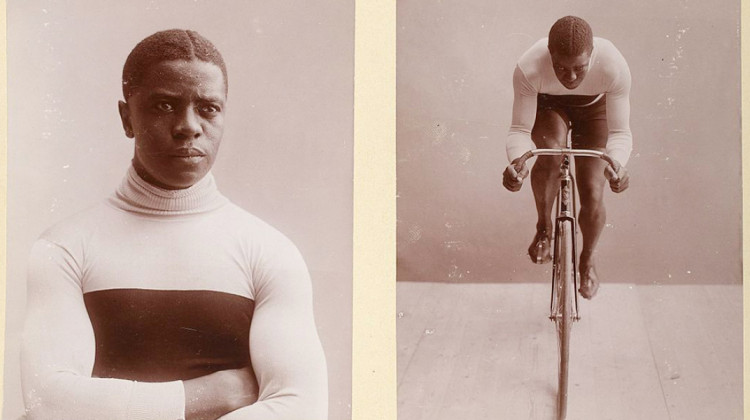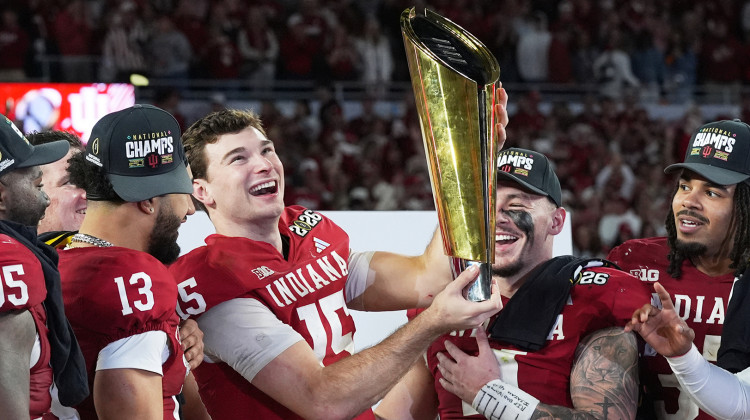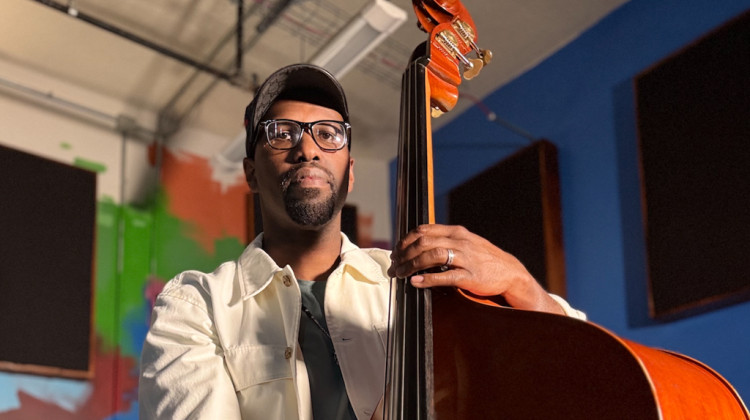Bicycle enthusiasts and history fans will be able to view a new exhibit at the Indiana State Museum. Visitors can view artifacts and have interactive experiences centered on the life of the first Black world champion bicyclist and Indy native Marshall "Major" Taylor. WFYI’s Terri Dee talks to the museum’s curator of social history, Kisha Tandy about the exhibit’s unique features and Indiana’s enthusiasm for the sport as early as the 1800s.
WFYI Reporter Terri Dee: Kisha, what can visitors to the Indiana State Museum experience with the exhibit?
Indiana State Museum Curator of Social History, Kisha Tandy: Visitors to the exhibit will have the opportunity to experience interactive as well as learning about the remarkable life of Major Taylor. They will have the opportunity to try to beat Major Taylor in a time trial. So, they'll have an opportunity to get on a bike and see if they can compete with him. They also have the opportunity to learn how bikes work and how to fix a flat tire, as well as the opportunity to try to build their own small bike.
Dee: Why did the Indiana State Museum feel it was worthy to feature this type of exhibit?
Tandy: This collection is full of information that Taylor used to write his autobiography, and it really is a chronicle of his life. The foundation of the exhibit is the collection which includes scrapbooks, photographs, letters and postcards. We use those materials to help tell the story of his life, and to chronicle all of his many victories and accomplishments.
Dee: For non-cyclists, what does the museum hope that someone who comes to view the exhibit could benefit from?
Tandy: For non-cyclists, you can learn about Major Taylor's early life here in Indianapolis. He was born Nov. 26,1878 and he remained in the city until 1895. You can learn about the cycling craze and different things that were going on in the city. How did Major live in Indianapolis? What was life like for his family? So, you'll get a little information about his travels, and his love for his wife and daughter. You will get the sense of what his life was like with his family. And that is especially true when you have the opportunity to hear portions of letters that were written to them. So, there are a lot of activities for everyone who comes to visit the exhibit.
Dee: The Indiana State Museum has to look at different exhibits, that they feel like they want to have featured at the museum. What are the criteria? What are the decisions based on when the appropriate personnel say, OK, we think that would make a great exhibit? What factors are involved with that?
Tandy: Telling the Indiana story and sharing Indiana history, and then also what is available in our collection. One of the things about Major Taylor is that we have the materials in the collection to help tell the story. We had the documentation of his travels. We had the images that could help support the exhibits and we have trophies that are part of the exhibit and the experience that we could have that could be part of the exhibit. So, having those items allowed us to place the foundation and build the exhibit.
Dee: Kisha, the exhibit sounds amazing. Thank you for sharing this information today and telling us about this exhibit.
Tandy: Thank you.
 DONATE
DONATE







 Support WFYI. We can't do it without you.
Support WFYI. We can't do it without you.